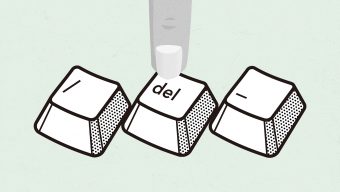Our world is moving faster and faster – so much so that there are days when we find it hard to keep the pace it imposes on us and the momentum we subsequently impose on ourselves. This environment, known by the acronym VUCA because it is Volatile, Uncertain, Complex, and Ambiguous, means that we must self-lead and also, in many cases, lead those around us.
The term VUCA first appeared in 1985 in the book Leaders. The Strategies For Taking Charge written by Warren Bennis and Burt Nanus. It addressed the new environment in which societies and organizations functioned after the collapse of the former Soviet bloc. A fresh paradigm revealed itself: the world was uncertain because there was a new environment, volatile because there was economic instability, ambiguous because, although there was enough information available, no one knew how to manage and use it, and finally, complex because of the myriad of new variables on the table and the possible interactions between them. All of this made it very difficult to analyze and predict future scenarios.
In early 2020, the Covid-19 pandemic brought about a new scenario, one which I no longer consider VUCA. The rules of the game have changed dramatically and require us to adjust quickly to a new shift in paradigm.
At this point in time, I believe that we have gone from being in an environment of VUCA to VUCAS. The first four letters still mean the same, because those four variables are still here with us. The fifth letter, S, however is not simply a plural. Its real meaning comes from the fact that the environment in which we now find ourselves is also Scary, that is, it makes us afraid. We are afraid of others and we look at them apprehensively if they are not close friends because we don’t know whether they might infect us with the virus or with any other disease that might appear on the horizon. Sometimes, we surprise even ourselves by pulling away from people in what is now almost a knee-jerk reaction.
This new behavior, which was not the norm for most of us a few years ago, also creates uncertainty and tension because, although we react like this, we don’t really want to turn into non-tactile beings in the long run.
Fear puts the brakes on innovation at a time when we need it the most.
In addition, the S also reminds us that the economic situation has worsened in this new environment. Many people have lost their jobs or small businesses after a long lockdown with significant reductions in their income. And, for a number of reasons, many medium-sized and large organizations continue to struggle in this situation. Mainly because of wariness about what the future may hold, but also because of a lack of consumer confidence in some products and services. All this worry and fear makes people feel less secure in this new VUCAS environment.
And how does this VUCAS scenario affect companies in terms of their people? Fear is a dangerous emotion, not because it is always real in the first world but because of the power it has to influence the behavior of employees, customers, and consumers.
This fear that has taken hold of people is partly real (i.e., the virus) but it also has an imaginary component, which is the foreboding that, from now on, things will be worse than they were before. When people are afraid, their performance drops. Fear makes them extremely cautious and they stop taking risks. It puts the brakes on innovation at a time when we need it the most. Fear is also a stressor in itself. The prospect of danger paralyzes individuals, particularly those who already have the tendency to avoid the unknown.
So, how can organizations mitigate this crippling emotion among their employees?
- Employee experience. More than ever, companies must invest in people and create a face-to-face and remote environment in which employees can engage with their work on a daily basis. It is important for workers at all levels to be able to enjoy and even be passionate about their tasks and responsibilities. The sadly trite saying, “treat your employees as though they were your customers and they will treat your customers as you would like them to treat them,” illustrates the strategy and objectives that should be pursued when creating an excellent employee experience – from first contact with the company to the end of their working relationship.
- Managing current and future potential talent. While companies should focus on identifying and nurturing those individuals who will become future leaders, they must treat all employees as important assets, until proven otherwise, and find a way for every individual to add value to the company’s mission. Training programs, project development, and exchanges can help foster the novel behaviors required to move into this uncharted territory. Finding out how each employee adds to the common cause is a key factor, both for People and Talent Departments and for the organization’s leaders and managers.
- Leadership. The VUCAS environment requires leadership that transforms the team and the workplace ecosystem, as well as the leader herself into a leader who empathizes, trusts colleagues, communicates effectively, and who dares to think outside the box in order to make brave decisions. These four skills, empathy, trust, thinking outside the box, and decision-making could be enough. But it is not, the new VUCAS environment also requires humble leaders who move in a terrain of holistic wellbeing that will be reflected in the balanced approach they bring to their different spheres of life, including the personal.
- Digital transformation. The digital is here to stay and most of us have already got used to terms such as artificial intelligence, big data, metaverse, chatbot, and algorithm. Organizations, therefore, must make the best of what technology has to offer, but without forgetting the human factor. Personally, I have witnessed a variety of technological changes in companies that have failed because not enough importance was given to the people who had to implement them and tread the uncharted territory of putting them to use. This is why clear communication and proper training increase the chances of any new technological deployment being taken on board by employees.
- Diversity. Globalization brought one very good thing to corporations: employee diversity. A VUCAS environment requires many different outlooks on tackling challenges and finding solutions. Therefore, having teams with people of different ages, genders, origins, races, and backgrounds brings a broader spectrum with which to analyze and make decisions on conflictive, unexpected, and unpredictable situations, thus increasing the chances of success. In addition, managing the different generations in organizations with mentoring programs, reverse mentoring, gamification, and intergenerational projects, for example, ensures the company can take full advantage of the diverse experiences and skills that each group brings to the table.
- Remote work. The new working system that is now a reality in many corporations, whether hybrid, 2-3 days on-site, or completely online, implies new forms of communication and interaction between teams, their clients, managers, and colleagues. Abusive use of meetings, excessive control by some managers, and employees’ inability to switch off from work are the arch enemies of the efficiency and effectiveness associated with this new approach to work. Therefore, some tips such as defining a clear agenda with specific times, having a moderator who manages the time and participation in meetings, taking breaks of at least five minutes every two hours, and leaving time in the day to do individual work that does not involve interaction with others, are all conducive to healthy, high-performance remote work. And when meeting via video, it is a good idea for everyone to agree to turn on the camera on so that everyone can see each other, interact fully, and show interest by nodding or expressing agreement or disagreement with facial gestures. In addition, while we are in the meeting we need to forget about our phones and e-mails, so that we can focus completely on what is being discussed. If we all take these tips on board, we will be fully engaged in the meeting as will the rest of the people we interact with, taking full advantage of this work approach.
- Purpose. Finally, having a clear idea of company purpose and how to work according to it is essential in the VUCAS environment. Being clear about where the company is going, what is being offered to the community, and through what type of culture and values it will be done, is key to managing this new paradigm. When the purpose of the company is clear from the top executives, it filters through the organization and creates a culture and set of values that encourage teamwork and gets everyone moving in the same direction. This requires excellent in-house communication and, above all, clearly discernible behaviors that leave no doubt as to what the company is pursuing and how it is working to achieve its goals. This, in turn, leads to a strong external impact on the company’s stakeholders.
In conclusion, if we want to increase our chances of success in this VUCAS environment, we must create, develop, and implement these seven drivers so that we can navigate the changes brought on by this new paradigm.
© IE Insights.











